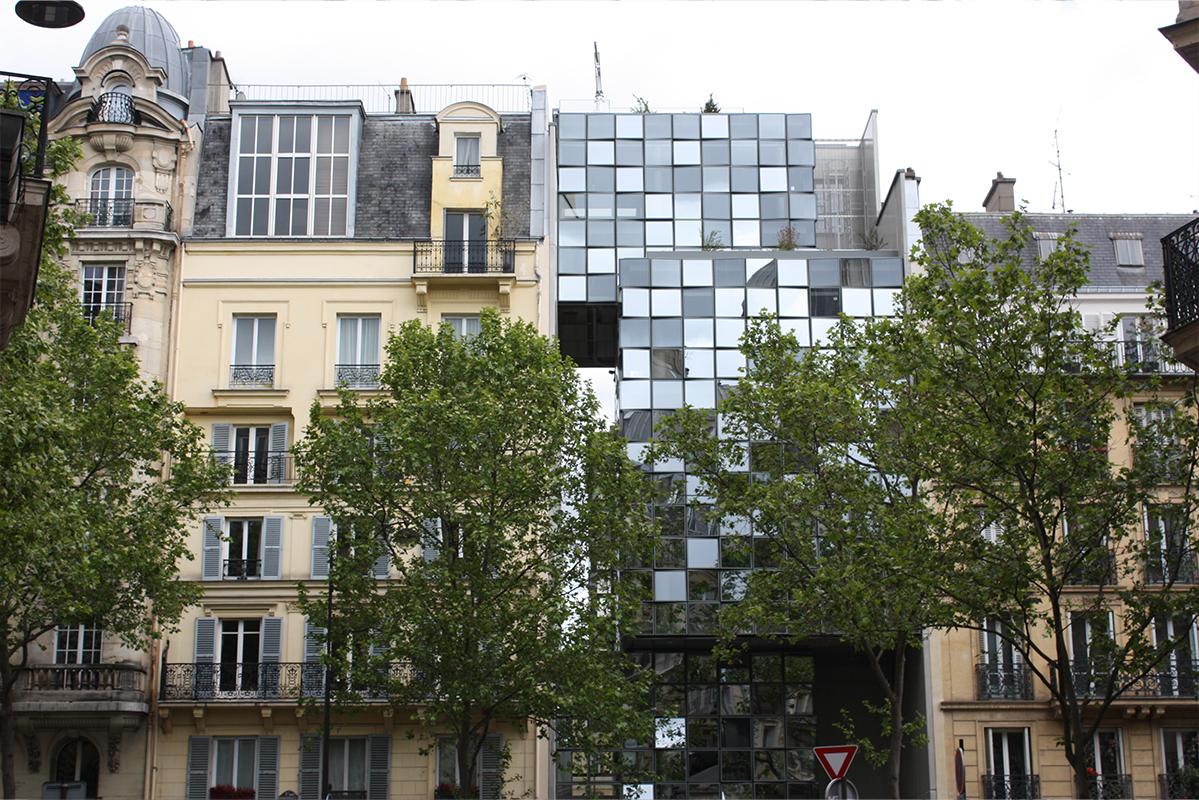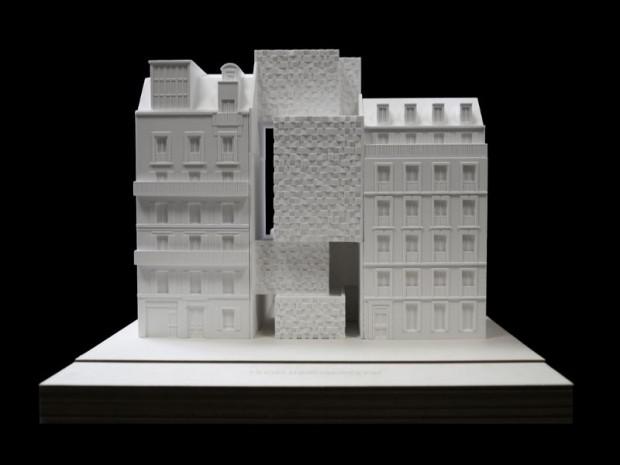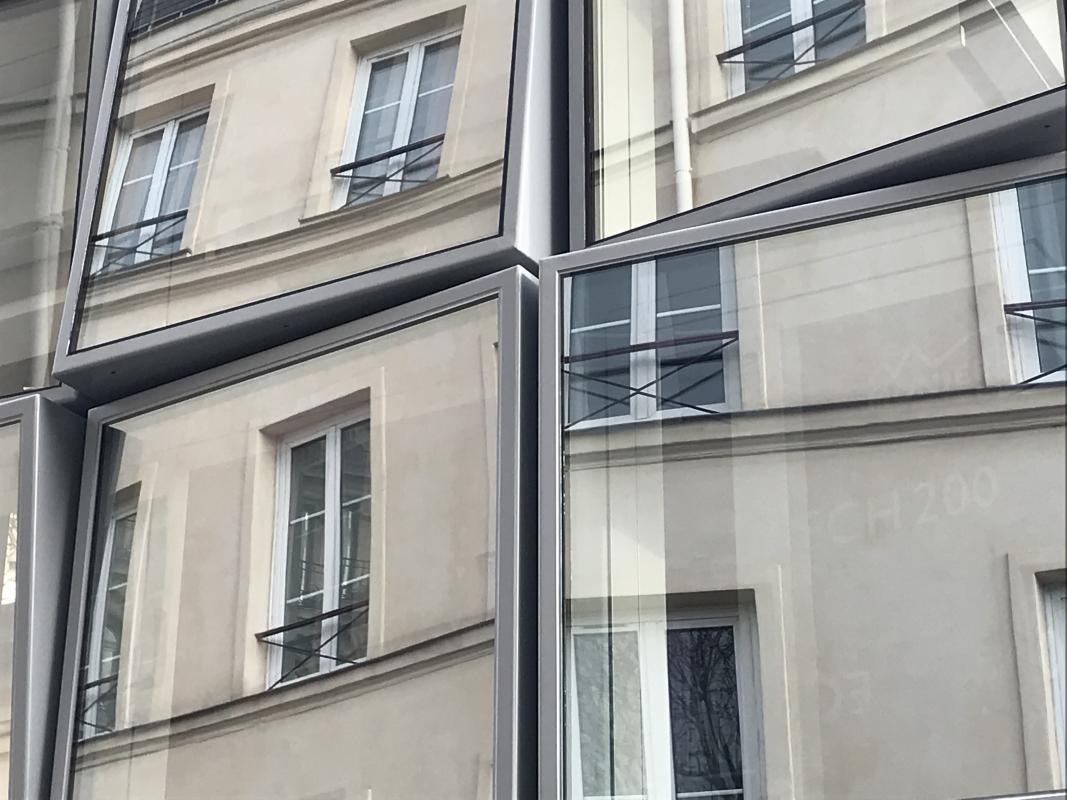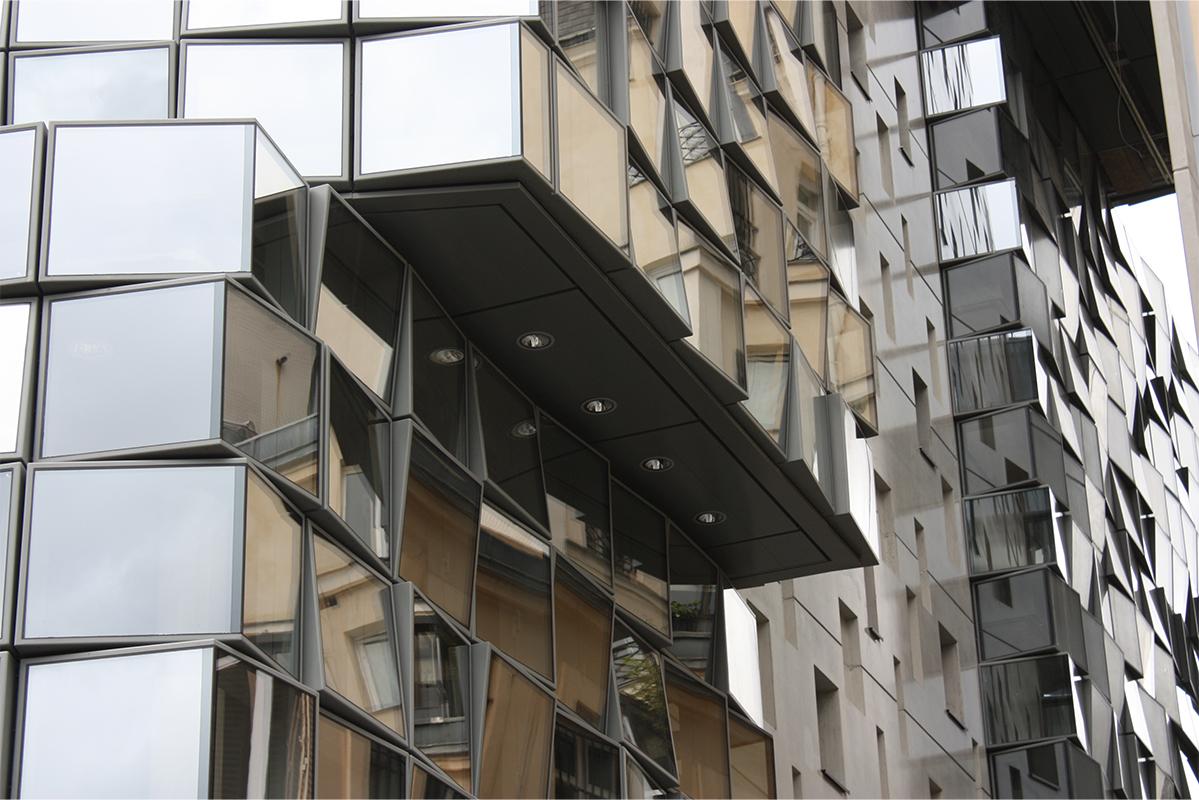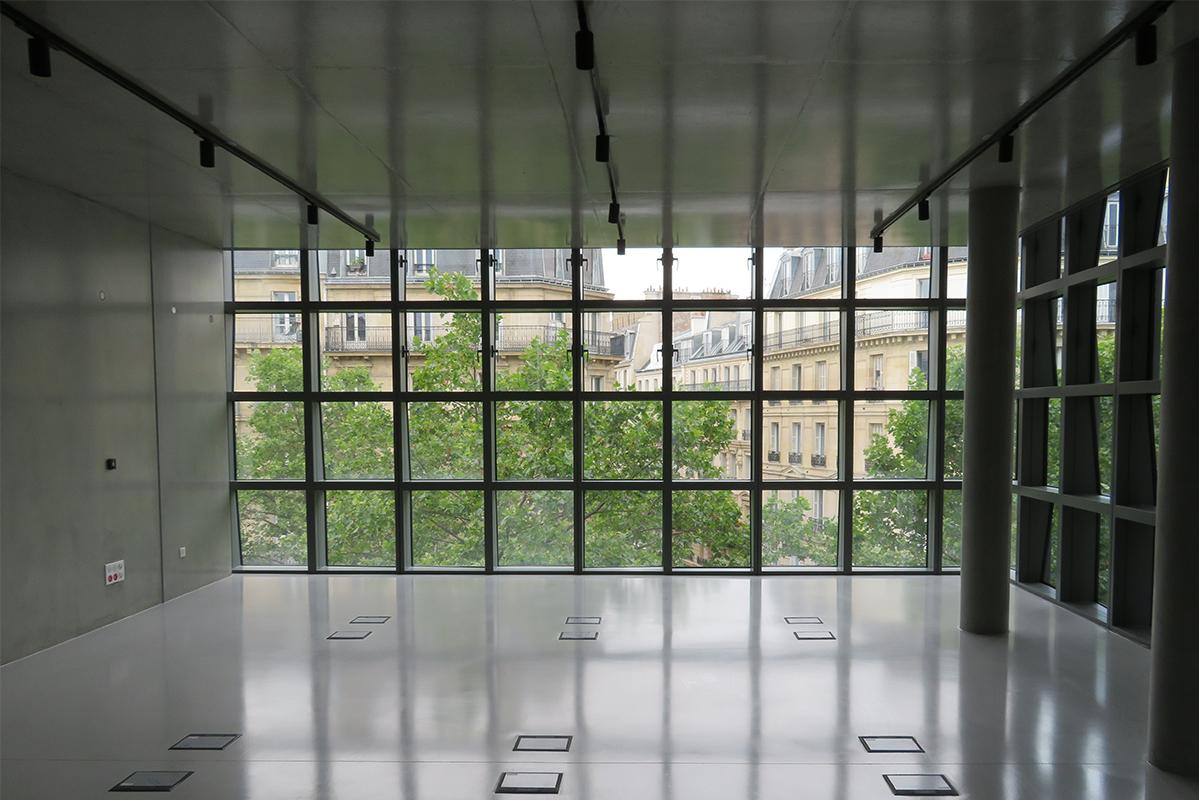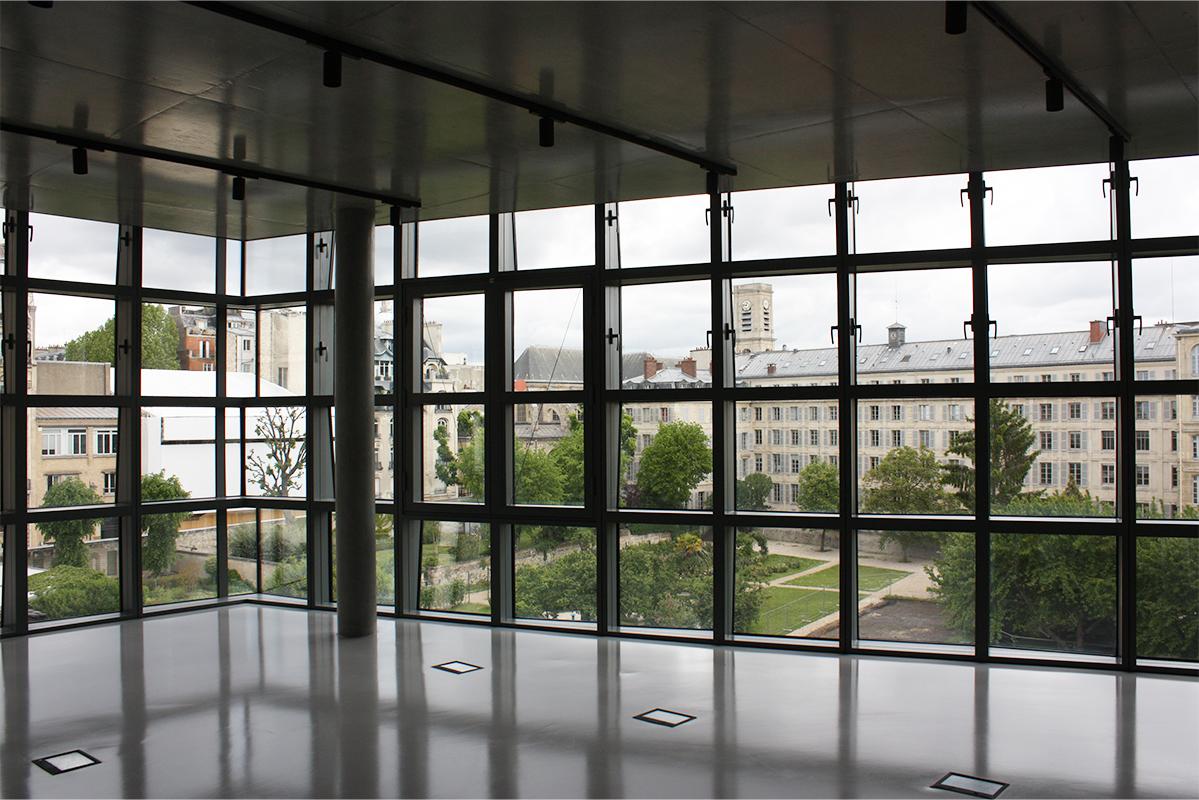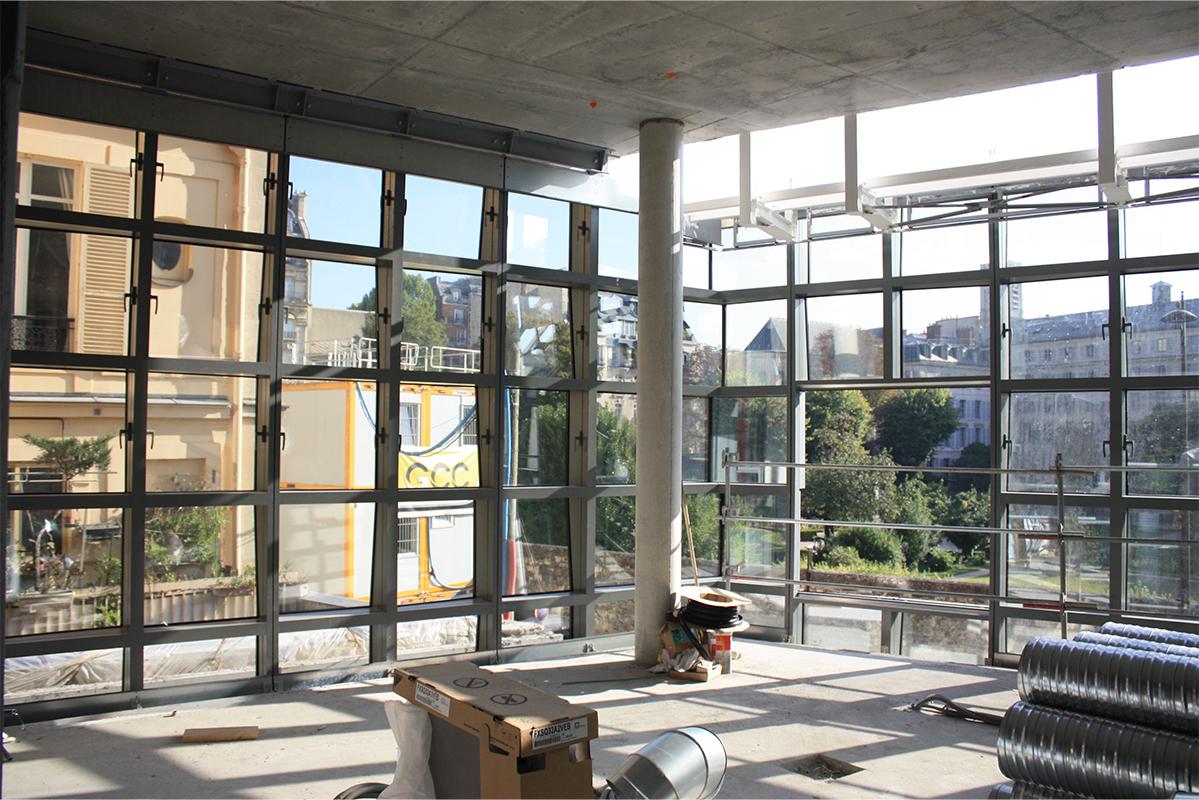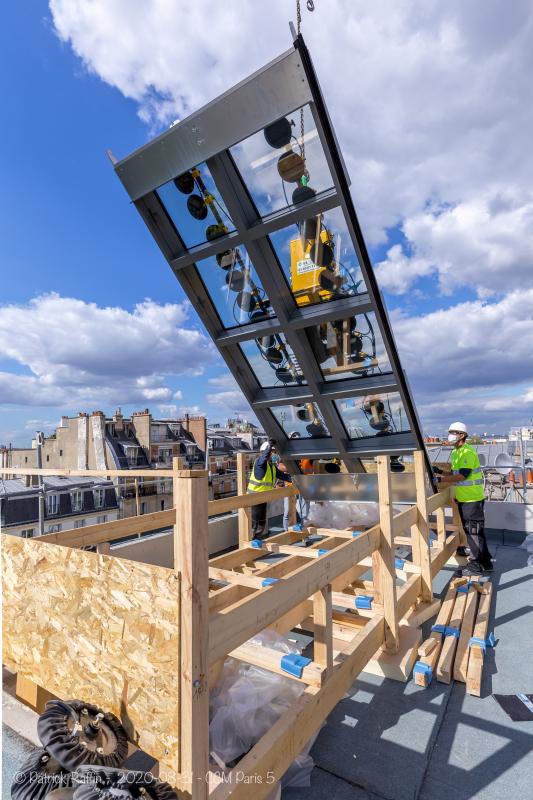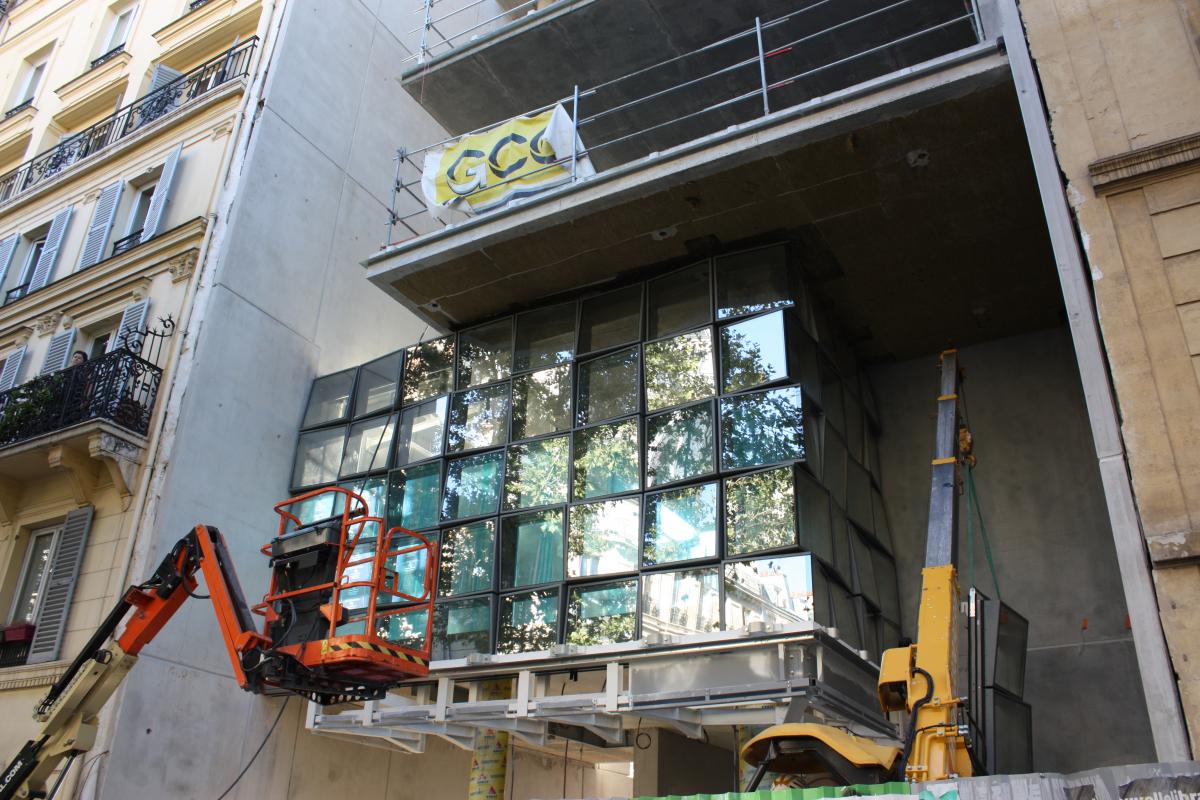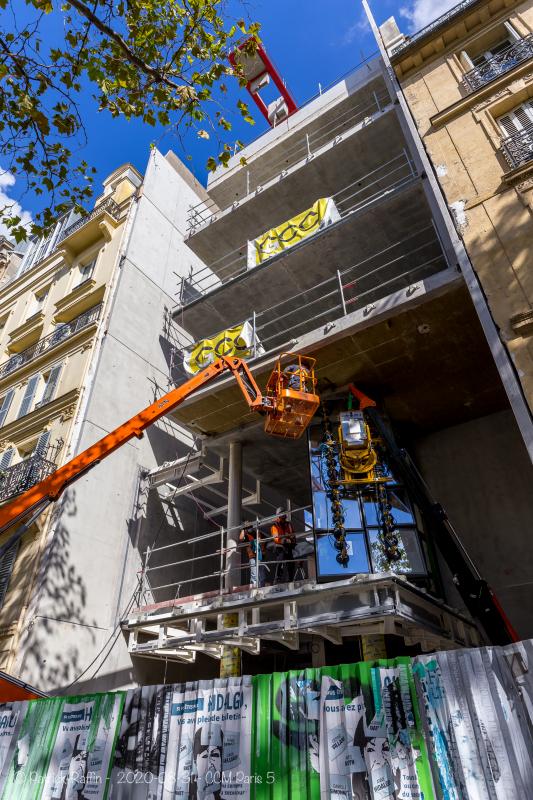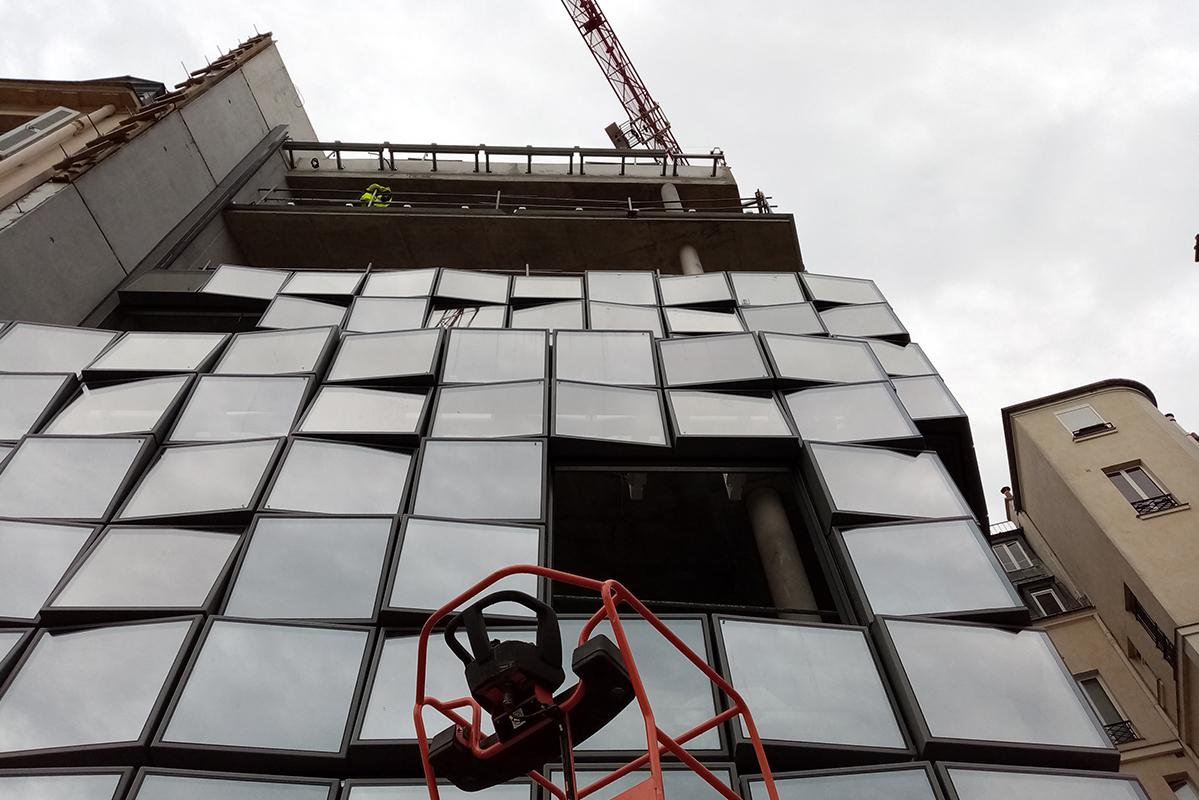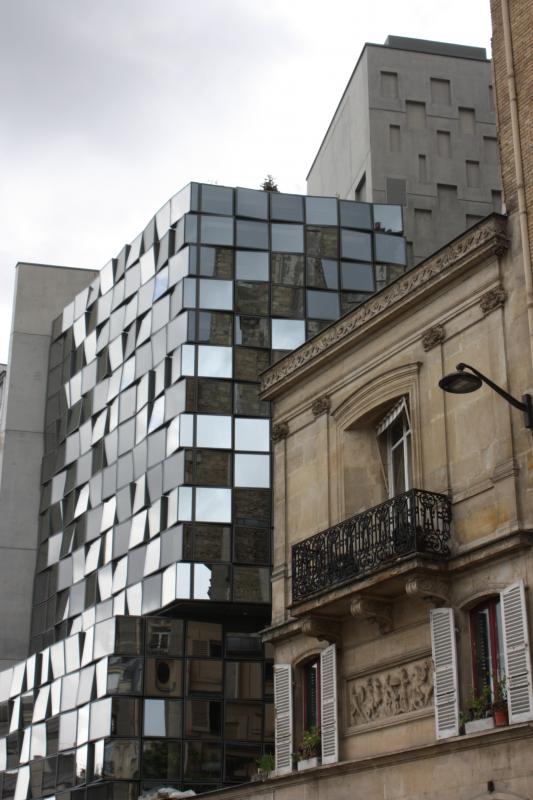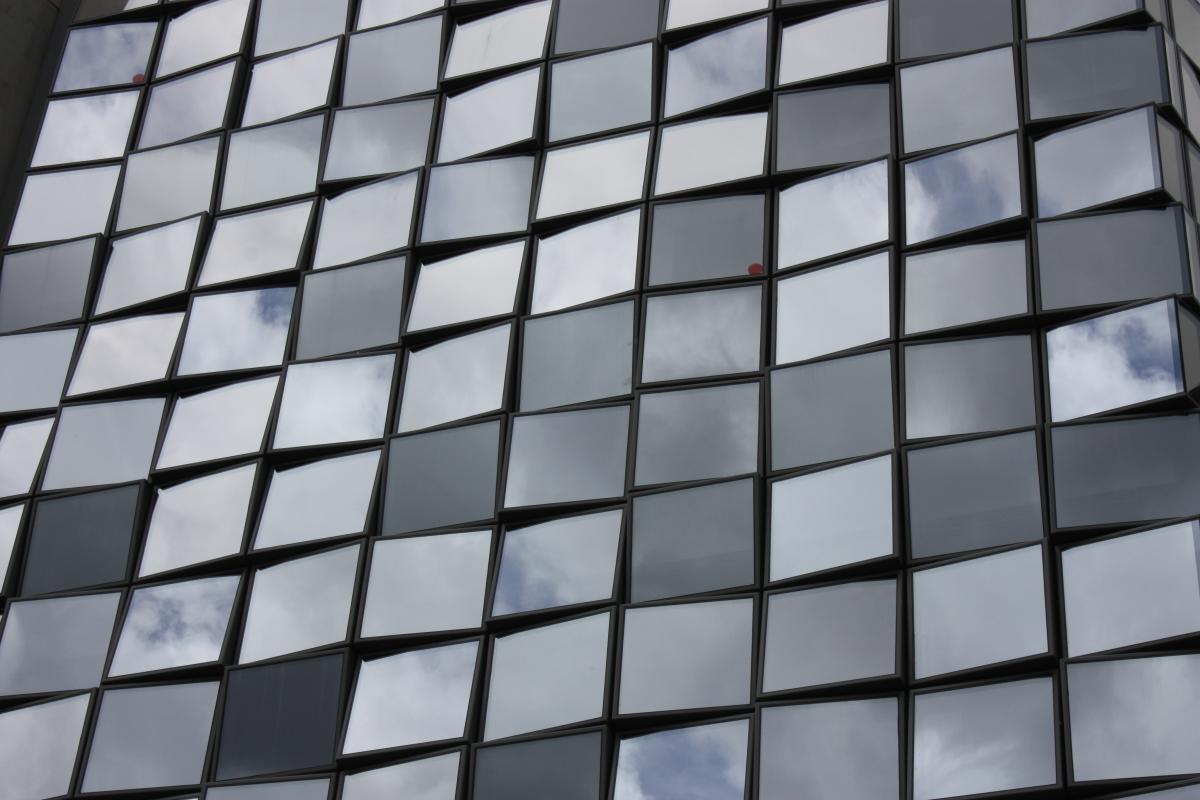Centre Culturel du Maroc
Construction d'un Centre Culturel du Maroc à Paris
The Embassy of Morocco in Paris, a long-time owner of a plot at 115 Boulevard St Michel, wanted to establish a center dedicated to the cultural influence of Morocco, on the site of a dilapidated building. Out of the 1,400m² of the program, one-third will be open to the public, featuring a café on the ground floor, an exhibition gallery, a library, and an auditorium for conferences and film screenings. The other floors will house offices.
The building was entirely reconstructed after the demolition of the existing structure. The new building is composed of cubes of 2 or 3 levels, stacked on top of each other and organized around a central core with vertical circulation. Inserted into the Haussmannian design of the city, the narrow plot connects Boulevard Michel and Rue Henri Barbusse. This function is retained with an interior passage reminiscent of the narrow alleys of a Medina. The stacking of cubes and the grid of the façade in square modules of 900 mm allows for play of the façade design.
The Oualalou+Choi agency is based in Paris and Morocco. T/E/S/S was responsible for the design of the façade, composed of prefabricated square glass modules.
Each module is glazed and adopts a faceted geometry. The glazing is tilted at approximately 6 degrees in one of the 4 directions (up, down, right, or left), to create a play of faceted glazing. The slightly mirrored solar layer enhances this effect and improves the façade's performance. The orientation of the modules in the 4 directions creates a dynamic and changing façade that enlivens the street. Despite the complexity of the overall façade, the square modules are assembled as a ladder to allow for simple on-site assembly.
The façade modules, fixed or opening, are held in place by a standard aluminum curtain wall framework. However, the project is unique due to the dense mullions and transoms. The double glazing is bonded to the frame, with the glazing overlapping the edge of the peripheral frame, allowing for a corner with a seamless transition of glazing. This results in a clean, sleek façade, which expresses the design by the orientation of each window module.
The particular geometry of the façade and the very dense grid of the modules impact the thermal performance of the façade. One of the challenges faced by T/E/S/S was to respect the architectural design of the façade as drawn by the architect while improving the performance of the façade modules as much as possible.

